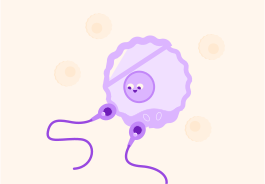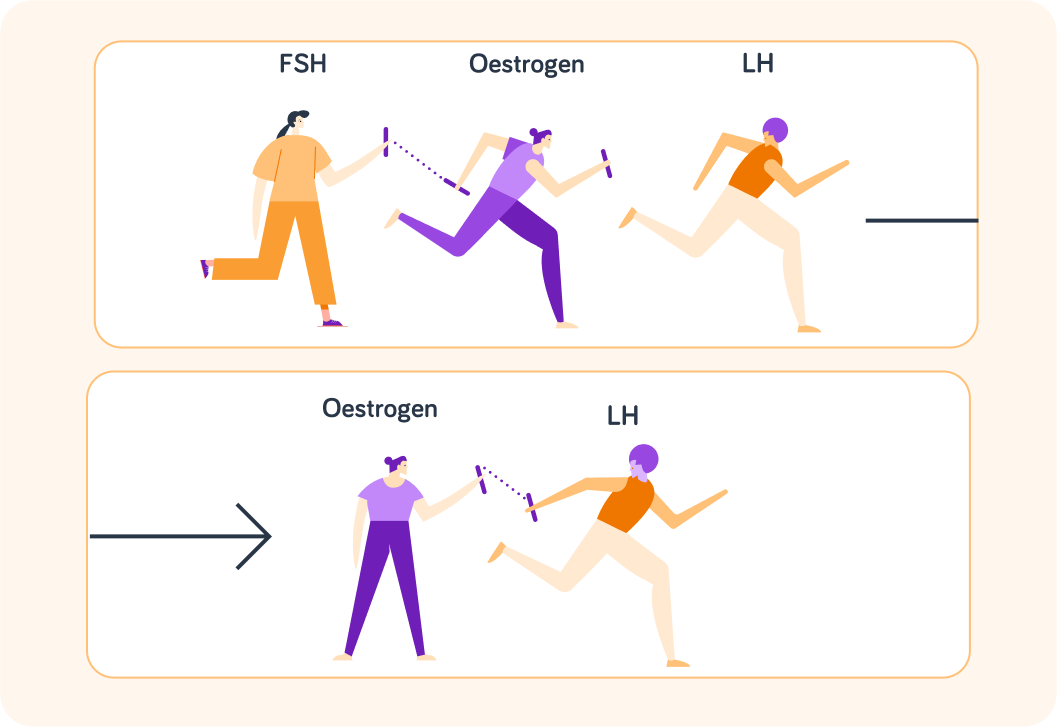YOU ARE LEARNING:
The Menstrual Cycle 2

The Menstrual Cycle 2
The menstrual cycle is controlled by the interaction of several hormones, such as FSH, oestrogen, LH and progesterone. This lesson will talk through graphs showing hormone levels during the cycle.
There are 4 hormones that control female menstruation. Do you remember which ones they are?

You can select multiple answers
We know the function of the four hormones in the four stages of the menstrual cycle, but how do these hormones actually interact? That is what this lesson will look at.
Have a good look at this diagram.
It shows each hormone in each stage of the menstrual cycle.

At day 4, what do you notice about the level of FSH compared to oestrogen?
A) FSH levels decrease, oestrogen levels increase. B) FSH levels increase, oestrogen levels decrease. C) Both hormone levels stay the same.
Answer A, B or C.


This relationship between FSH and oestrogen isn't by chance.
FSH actually stimulates the ovaries to produce oestrogen.

Looking at the graph, what do you think increased levels of oestrogen does to FSH?
A) Increase the levels B) Decrease the levels C) Nothing


Again, the relationship between FSH and oestrogen isn't by chance.
Increased levels of oestrogen actually inhibit the production of FSH.

What else do you think oestrogen does?
A) Stimulates progesterone to be released B) Inhibits the release of LH C) Stimulates the release of LH


Imagine each hormone is a runner in a relay race.
When runner 1 (FSH) passes the baton over to runner 2 (oestrogen), runner 1 (FSH) stops while runner 2 gains speed. Runner 2 (oestrogen) also causes runner 3 (LH) to start running, and when runner 3 is passed the baton, runner 2 (oestrogen) stops.

The exception to this relay idea is progesterone.
Progesterone is produced from the follicle left over from ovulation in the ovary, so it is not directly affected by the previous hormone's levels.

Which hormone is it that causes the release of the egg from the follicle (ovulation), and therefore allows the follicle to start producing progesterone?
A) FHS B) Oestrogen C) LH


Progesterone is active at the end of the cycle, so it needs to stop any more eggs being matured or released from the ovaries. What two hormones does progesterone need to inhibit?

How can the 4 hormones be summarised?

You can select multiple answers
Here is the same cycle as before, but the labels of the hormones have been removed.
Two of the hormone graphs are missing too!

Which two hormone graphs are missing? There is one from the top section and one from the bottom.
A) FSH and oestrogen B) LH and progesterone C) FSH and progesterone
Answer A, B or C.


Here is the complete cycle.
Now LH and progesterone are back in their respective places.

What is the orange line, important at the beginning of the cycle?
A) Oestrogen B) LH C) FSH
Answer A, B or C.


What colour line and hormone does the orange FSH stimulate the release of from the ovaries?
A) Blue - oestrogen B) Blue - LH C) Purple - LH


What can you see happens when oestrogen levels increase?
A) The egg is released B) The uterus lining thickens C) The uterus lining thickness is maintained


Between approximately which days does progesterone maintain the uterus lining thickness?
A) 1-4 days B) 4-14 days C) 14-28 days


Pick all the statements you think are correct.

You can select multiple answers
